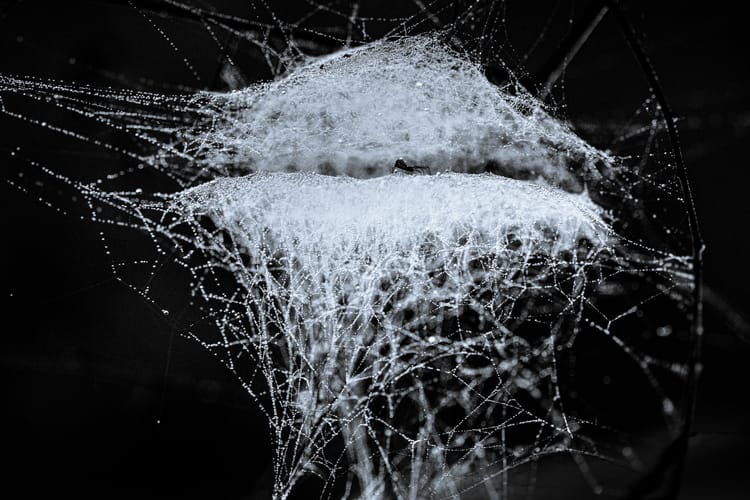5. David Green ~ not as hidden

The values of community-building and innovation that we aspire to nurture through confluence are undeniably evident in David Green’s collection. Through his poetry, David shows us what an open mind can gift to others and ourselves. There is much we can learn from the way he navigates the complexities of life through haiku. He observes his surroundings, and particularly the people within it, with compassion. Equally, he observes himself with kindness – sometimes gently (as in “lovesong”), other times cheekily (“secretly”). Reading through his work, we can imagine that, if he were dropped into the middle of a diverse gathering of poets, he would have no trouble connecting with each individual and sharing meaningful conversations with them.
Beyond serving to connect with others and himself, David’s openness has manifested in varied possibilities of form in haiku. His exploration of line breaks (alternatively, absence of breaks), typographical details, brevity (even for haiku), and mashups has created an exciting collection that intrigues the reader. With a less masterful hand, these experimentations could easily have come across as gimmicky. Under David’s care, however, they become “aha” moments in ways beyond what could be achieved by juxtaposition alone. We applaud his ingenuity and look forward to seeing his haiku and other inspired forms reflected more broadly in the poetry community.
Antoinette Cheung, confluence co-editor
poems
skipping stone
where it
belongs
Modern Haiku, issue 55.2
waterdrop
not yet
a tear
Modern Haiku, issue 55.1
never not scared city rabbit
she is our child
they are our child
waxing moon
trail marker you are her(e)
mending
what is broken
mountain view
inpatientstayweforgettofeedtheirgoldfish
summer sublet
generic Ativan
on the bathroom sill
(boy)friend
a (hidden) compartment
-alized life
ultraviolet
not as hidden
as he thought
niagara shale
just a single photo
of my mom
wedding vows too soft to hear summer rain
Frogpond, issue 47:2
jungle gym
no crows
to speak of
(after Basho and Hitchcock)
secretly
on the subway car
my farts
(after Issa and Pound)
scorcher
she slips ice cubes
in her bra
call and response
the last Kaua’i’ōō on earth
sings for a mate
clinging
to the masonry
chirping sparrow
sideways sleet my anger at my anger
which way round wisteria
last week of school
a herd of yellow buses
outside the zoo
Mayfly, issue #77
lovesong
the only lyrics
my daughters’ names
essay
the tiny details
Haiku began, for me, simply as a daily creative practice, but quickly grew into a passion and practice as I try to write poems which contain as much of the beauty and power and profoundness these tiny poems can hold. I write to connect, to express my life, to quiet my brain, to be present, slow down. I write to express things which need saying, need amplifying, or simply need some love and attention.
Contemplating haiku - whether reading a poem, composing a poem or just sitting on my back porch silently taking in that particular moment, open to whatever haiku might be hiding in the moment - helps me find peace. It helps me be present, to notice and appreciate the countless small things in front of me. Haiku helps me make sense of the world I find myself in, of the people who share it with me: loved ones, friends, neighbors, strangers.
Good haiku can “set the world right” for at least a brief moment for the reader, bring some clarity, or wisdom, or a moment of contemplation, or recall, or a simple nod of knowing or appreciation. A good haiku can short circuit your brain (in a good way) and gently, sometimes elegantly, sometimes surprisingly, move your thoughts elsewhere, to the haiku moment recorded by the poet.
Given the state of the world, with so much at stake, with so much that is uncertain or downright scary, with so much that seems to just be wrong, haiku can offer respite, peace, a pause or break, compassion, community, understanding and hope. There is significant value in listening to a sparrow sing or noticing the way a piece of string caught in a fence waves in the breeze or the look on a grandmother’s face. “Zooming in” to such tiny details can help one reset, refocus, take time to breathe. This is vital for all of us. And haiku allows us to share these moments, reveal them to each other, to bring a smile or a nod, a furrowed brow or an epiphany or, simply, an appreciation of a beautiful image or tiny moment.
commentaries from Fellows
Nicky Gutierrez, Lorraine A Padden & Rowan Beckett Minor
Nicky Gutierrez
In a form where words matter, David Green highlights the power of words by carefully stitching them together to create a haiku/senryu where every syllable counts. The brevity of his poems encourages the reader to slow down and consider each word just as Green does writing them. His philosophy of haiku is seen in his work where he focuses on the everyday lived experiences. In focusing from a “water drop,” a “skipping stone” to “mountain views,” “jungle gym,” and “subway car”, Green brings the reader to these objects/actions/moments in relation with the greater world around them. Through his use of juxtaposition, Green connects different images to capture the moment that he sees. By focusing on these small things in the moments he captures, he is instructing the reader to also look for these small things in the world around them to find the hidden worlds within our world. Green often times blends haiku and senryu together creating poems that bring both the natural and human together in a balanced way, showing that both are not mutually exclusive but are in relation with each other.
Lorraine A Padden
David Green writes haiku with the precision and care of a botanist who seedbanks rare plant species to help ensure genetic diversity and viability over time. While the future of haiku is certainly not imperiled, Green takes its abundant flourishing for future generations of writers and poetry lovers quite seriously. Being both highly-experienced as an educator and newly immersed in the genre, Green’s voice is especially fresh and forward-thinking. His poems explore ways in which haiku may serve to support healing and resilience—small expressions that punch above their weight in helping us get on in a profoundly uncertain world. His work offers moments of clarity, peace, and compassion for our common humanity.
While Green’s poems may invite quietude, they also resonate with deeply unsettling truths:
call and response
the last Kaua’i’ōō on earth
sings for a mate
The disappearance of this bird from its native Hawaiian islands represents the loss of an entire avian family. Rather than declare this ecological disaster, Green demonstrates erasure by strikeout. The voice signaling a bird’s presence is negated on the page just as its sound has literally vanished from the wild.
Green’s novel use of typographical gestures—strikeouts, parentheses, variations in word spacing—are tools that serve to hide meaning in plain sight. We read and pause, encouraged to dive deep into moments of stillness that “set the world right” just as they sound a clarion call to action. I can’t wait to read what future generations of haijin will offer, having been inspired by Green’s nuanced bending and folding of language. Perhaps something like this:
mending
what is broken
mountain view
Rowan Beckett Minor
Not afraid to take risks, David Green’s work is perceptive and visceral, and although relatively new to haiku, there is endless assurance in his poetic voice. Green’s haiku and senryu are for the common person. There is a strong, unique sense of place in his work that offers readers a sense of belonging and allows them to exist in the present moment with Green, just as is. These poems might be easy to understand, but the author’s wisdom is uncontained and deep-rooted. Although Green skillfully displays knowledge of several craft tools and Japanese aesthetics, such as brevity, cut phrase, and wabi, it is his use of ma that elevates every poem. The author is able to leave so much space for his readers that each moment feels isolated. Green’s haiku and senryu are not just brief, but microscopic. Each image is framed as if taken with a macro lens, with only one distinct element in focus and everything else blurred out. There is much to learn from Green and his unmatched interpretation of the world around us.
Thank you for reading! We invite you to continue the conversation by hitting the "comment" button below. Feel free to share your favorite poem of David's, your reactions to his work, or feedback for the journal. David and the editors look forward to reading and responding to your comments.
If you liked the issue, we also welcome you share this with others in your community. Stay tuned for the next issue in January!






Member discussion